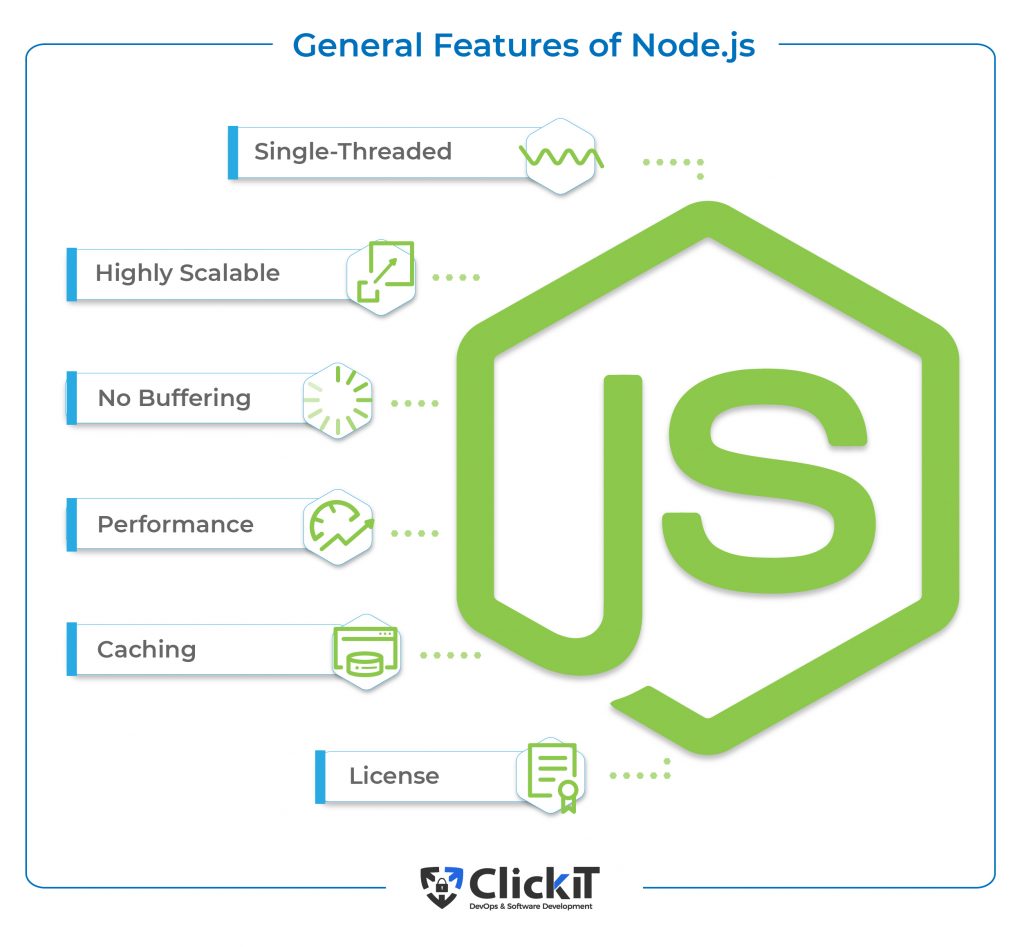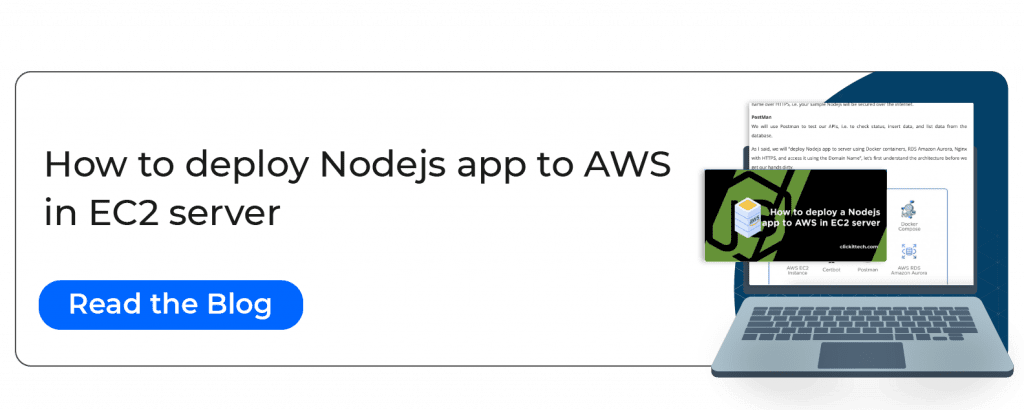Nodejs is a leading software development technology with a wide range of frameworks. These frameworks come with features, templates, and libraries that help developers overcome setbacks and build applications faster with fewer resources. This article takes an in-depth look at NodeJS frameworks in 2024. Read on to discover what they are, their features, and their application.
Table of contents
- What is Nodejs?
- General Features of Nodejs
- What are the top Nodejs Backend Frameworks?
- 1. Express.js
- 2. Next.js
- 3. Koa
- 4. Nest.js
- 5. Hapi.js
- 6. Fastify
- Conclusion of Nodejs frameworks
- FAQs
What is NodeJS?
Nodejs is an open-source server environment that runs on various platforms, including Windows, Linux, Unix, Mac OS X, and more. It is free, written in JS, and built on Chrome’s V8 JavaScript engine.
Here’s how Nodejs is described on its official website:
“Nodejs is a platform built on Chrome’s JavaScript runtime for easily building fast and scalable network applications. As an asynchronous event-driven JavaScript runtime, Nodejs is designed to build scalable network applications… Users of Nodejs are free from worries of dead-locking the process since there are no locks. Almost no function in Nodejs directly performs I/O, so the process never blocks except when the I/O is performed using synchronous methods of the Nodejs standard library. Because nothing blocks, scalable systems are very reasonable to develop in Nodejs.”
Ryan Dahl developed this cross-platform runtime tool for building server-side and networking programs. Nodejs makes development easy and fast by offering a wide collection of JS modules enabling developers to create web applications with higher accuracy and less stress.
Read our blog Why use Node.js to learn more about how it can help your app development.
General Features of Nodejs
Nodejs has some distinctive characteristics; the key features include:

Single-Threaded
Nodejs utilizes a single-threaded yet scalable style coupled with an event loop model. One of the biggest draws of this setup is that it’s capable of processing multiple requests. With event looping Nodejs can perform non-blocking input-output operations.
Highly Scalable
Applications developed with Nodejs are highly scalable because the platform operates asynchronously. It works on a single thread, which enables the system to handle multiple requests simultaneously. Once each response is ready, it is forwarded back to the client.
No Buffering
Nodejs applications cut down the entire time required for processing by outputting data in blocks with the help of the callback function. They do not buffer any data.
Open Source
This simply means that the platform is free to use and open to contributions from well-meaning developers.
Performance
Since Nodejs is built on Google chrome’s V8 JavaScript engine, it facilitates faster execution of code. Leveraging asynchronous programming and non-blocking concepts, it can offer high-speed performance. The V8 JS engine makes code execution and implementation easier, faster, and more efficient by compiling JavaScript code into machine format.
Caching
The platform also stands out in its caching ability. It caches modules and makes retrieving web pages faster and easier. With caching, there is no need for the re-execution of codes after the first request. The module can readily be retrieved seamlessly from the application’s memory.
License
The platform is available under the MIT license.
Our blog Top node js frameworks is also available in DZone
What are the top Nodejs Frameworks for Backend?
Frameworks for Nodejs help software architects to develop applications efficiently and with ease. Here are the best Nodejs backend frameworks:

Do you want to know de differences between NodeJS and Python? Learn about them in our blog Node.js vs Python: Which One Is Better
1. Express.js
Express.js is an open-source Nodejs module with around 18 million downloads per week, present in more than 20k stacks, and used by over 1,733 companies worldwide. This is a flexible top Nodejs framework with cutting-edge features, enabling developers to build robust single, multi-page, and hybrid web applications.
With Express.js the development of Node-based applications is fast and easy. It is a minimal framework that has many capabilities accessible through plugins. The original developer of Expres.js is TJ Holowaychukand. It was first released on the 22nd of May, 2010. It is widely known and used by leading corporations like Fox Sports, PayPal, Uber, IBM, Twitter, Stack, Accenture, and so on.
Key Features of Express.js
Here are the features of Express.js:
- Faster server-side development.
- Great Performance – it offers a thin layer of robust application development features without tampering with Nodejs capabilities.
- Many tools are based on Express.js.
- Dynamic rendering of HTML pages.
- Enables setting up of middlewares to respond to HTTP requests.
- Very high test coverage.
- Efficient routing.
- Content negotiation.
- Executable for generating applications swiftly.
- Debugging – the framework makes debugging very easy by offering a debugging feature capable of showing developers where the bugs are.
When to Use Express.js?
Due to the high-end features outlined above(detailed routing, configuration, security features, and debugging mechanisms), this Nodejs framework is ideal for any enterprise-level or web-based app. That said, it is advisable to do a thorough Nodejs framework comparison before making a choice.
2. Next.js
Next.js is an open-source, minimalistic framework for server-rendered React applications. The tool has about 1.8 million downloads, present in more than 2.7k stacks, and is used by over 800 organizations. Developers leverage the full-stack framework to build highly interactive platforms with SEO-friendly features. Version 12 of the tool was released in October of last year, and this latest version promises to offer the best value.
This top Nodejs framework enables React-based web applications capabilities like server-side rendering and static page generation. It offers an amazing development experience with great features you need for production, ranging from smart bundling, TypeScript support, to server rendering and so on. In addition, no configuration is needed.
It makes building fast and user-friendly static websites and web applications easy using React. With Automatic Static Optimization, Next.js builds hybrid applications that feature both statically generated and server-rendered pages.
Features of Next.js
Here are the key features of Next.js:
- Great page-based routing API.
- Hybrid pages.
- Automatic code splitting.
- Image optimization.
- Built-in CSS and SaaS support.
- Fully extendable.
- Detailed documentation.
- Faster development.
- Client-side routing with prefetching.
When to Use Next.js?
If you are experienced in React, you can leverage Next.js to build a high-demanding app or web app shop. The framework comes with a range of modern web technologies you can use to develop robust, fast, and highly interactive applications.
3. Koa
Koa is an open-source backend tech stack with about 1 million downloads per week, present in more than 400 stacks, and used by up to 90 companies. The framework is going for a big jump with version 2. It was built by the same set of developers that built Express. Still, they created it with the purpose of providing something smaller that is more expressive and can offer a stronger foundation for web applications and APIs.
This framework stands out because it uses async functions, enabling you to eliminate callbacks and improve bug handling. Koa leverages various tools and methods to make coding web applications and APIs easy and fun. The framework does not bundle any middleware.
The tool is similar to other popular middleware technologies; however, it offers a suite of methods that promote interoperability, robustness, and ease of coding middleware. In a nutshell, the capabilities that Koa provides help developers to build web applications and APIs faster with higher efficiency.
Features of Koa
Here are some of the key features that make Koa stand out from other best Nodejs frameworks:
- The framework is not bundled with any middleware.
- Small Footprint – being a lightweight and flexible tool, it has a smaller footprint when compared to other Nodejs frameworks. That notwithstanding, you have got the flexibility to extend the framework using plugins – you can plug in a wide variety of modules.
- Contemporary Framework – Koa is built using recent technologies and specifications (ECMAScript 2015). As a result, programs developed with it will likely be relevant for an extended period.
- Bug Handling – the framework has features that streamline error handling and make it easier for programmers to spot and get rid of errors. This results in web applications with minimal crashes or issues.
- Faster Development – one of the core goals of top Nodejs frameworks is to make software development faster and more fun. Koa, a lightweight and flexible framework, helps developers to accelerate development with its futuristic technologies.
When to Use Koa?
The same team developed Koa and Express. Express provides features that “augment node,” while Koa was created with the objective to “fix and replace Node.” It stands out because it can simplify error handling and make apps free of callback hell. Instead of Node’s req and res objects, Koa exposes its ctx.request and ctx.response objects.
On the flip side, Express augments node’s req and res objects with extra features like routing and templating, which do not happen with Koa. It’s the ideal framework to use if you want to get rid of callbacks, while Express is suitable when you want to implement Nodejs and conventional Nodejs-style coding.

4. Nest.js
Nest.js is a Nodejs framework that is great for developing scalable and efficient server-side applications. Nest has about 800K downloads per week, present in over 1K stacks, and is used by over 200 organizations. It is a progressive framework and an MIT-licensed open-source project. Through official support, an expert from the Nest core team could assist you whenever needed.
Nest is developed with TypeScript, uses modern JavaScript, and combines Object-Oriented Programming (OOP), Functional Programming (FP), & Functional Reactive Programming (FRP). The framework makes application development easy and enables compatibility with a collection of other libraries, including Fastify. Nest stands out from Nodejs frameworks in providing an application architecture for the simplified development of scalable, maintainable, and efficient apps.
Features of Nest.js
The following are the key features of Nest.js:
- Nest solves the architecture problem – even though there are several libraries, helpers, and tools for Nodejs, the problem of server-side architecture has not been solved. Thanks to Nest, that offers an application architecture that makes the development of scalable, testable, maintainable, and loosely built applications.
- Easy to use – Nest.js is a progressive framework and easy to learn and master. The architecture of this framework is similar to that of Angular, Java, and .Net. As a result, the learning curve is not steep, and developers can easily understand and use this system.
- It leverages TypeScript.
- Nest makes application unit testing easy and straightforward.
- Ease of integration – it supports a range of Nest-specific modules. These modules easily integrate with technologies such as TypeORM, Mongoose, and more.
- It encourages code reusability.
- Amazing documentation.
When to use Nest.js?
Nest is the ideal framework for the fast and efficient development of applications with simple structures. If you are looking to build apps that are scalable and easy to maintain, Nest is a great option. In addition to being among the fastest-growing Nodejs framework, users enjoy a large community and an active support system.
With the support platform, developers can receive the official help they need for a dynamic development process, while the Nest community is a great place to interact with other developers and get insights & solutions to common development challenges.
5. Hapi.js
This is an open-source Nodejs framework suitable for developing great and scalable web apps. Hapi.js has about 400K downloads per week, present in over 300 stacks, and more than 76 organizations admitted they use Hapi. The framework is ideal for building HTTP-proxy applications, websites, and API servers. Hapi was originally created by the mobile development team at Walmart to handle their traffic on Black Friday.
Since then, it has been improved to become a powerful standalone Node framework that stands out from others with built-in modules and other essential capabilities. Hapi has some out-of-the-box features that enable developers to build scalable applications with minimal overhead. With Hapi, you have got nothing to worry about. The security, simplicity, and satisfaction associated with this framework is everything you need for creating powerful applications and enterprise-grade backend needs.
Features of Hapi.js
Here are the features that make Hapi one of the best Nodejs frameworks:
- Security – you do not have to worry about security when using Hapi. Every line of code is thoroughly verified, and there is an advanced security process to ensure the maximum safety of the platform. In addition, Hapi is a leading Node.js framework with no external code dependencies. Some of the security features and processes include regular updates, end-to-end code hygiene, high-end authentication process, and in-house security architecture.
- Rich ecosystem – there is a wide range of official plugins. You can easily find a trusted and secure plugin you may need for critical functionalities. With its exhaustive range of plugins, you do not have to risk the security of your project by trusting external middleware – even when it appears to be trustworthy on npm.
- Quality – when it comes to quantifiable quality metrics, Hapi is one of the frameworks for Nodejs that scores higher than many others. When considering parameters like code clarity, coverage & style, and open issues, Hapi stands out.
- User Experience – the framework enables friction-free development. Being a developer-first platform, there are advanced features to help you speed up some of the processes and increase your productivity.
- Straightforward Implementation – it streamlines the development process and enables you to implement what works directly. The code does exactly what it is created to do; you do not have to waste time experimenting to see what might work or not.
- Easy to learn interface.
- Predictability.
- Extensibility and customization.
When to Use Hapi.js?
Hapi does not rely heavily on middleware. Important functionalities like body parsing, input/output validation, HTTP-friendly error objects, and more are integral parts of the framework. There is a wide range of plugins, and it is the only top Nodejs framework that does not depend on external dependencies.
With its advanced functionalities, security, and reliability Hapi stands out from other frameworks like Express (which heavily relies on middleware for a significant part of its capabilities). If you are considering implementing Express for your Web app or Rest API project, Hapi is a reliable option to use.
6. Fastify
Fastify is an open-source Nodejs tool with 21.7K stars on Github, 300K weekly downloads, and more than 33 companies have said they use Fastify. This framework provides an outstanding user experience, great plugin architecture, speed, and low overhead. Fastify is inspired by Hapi and Express. Given its performance, it is known as one of the fastest web frameworks. Popular organizations like Skeelo, Satiurn, 2hire, Commons.host and many more are powered by Fastify.
Features of Fastify
Fastify is one of the best frameworks for Nodejs. Here are some of its amazing features:
- Great performance – it is the fastest Nodejs framework with the ability to serve up to 30 thousand requests per second. Fastify focuses on improved responsiveness and user experience all at a lower cost.
- Highly Extensible – hooks, decorators, and plugins enable Fastify to be fully extensible.
- Developer-first framework – the framework is built with coders in mind. It is highly expressive with all the features developers need to build scalable applications faster without compromising quality, performance, and security. If you are looking for a high-performance and developer-friendly framework, Fastify checks off all the boxes.
- Logging – due to how crucial and expensive logging is, Fastify works with the best and most affordable logger.
- TypeScript ready.
When to Use Fastify?
This is the ideal framework for building APIs that can handle a lot of traffic. When developing a server, Fastify is a great alternative to Express. If you want a top Nodejs framework that is secure, highly performant, fast, and reliable with low overhead, Fastify stands out as the best option.

| Top Nodejs Frameworks Summary | |
|---|---|
| Express.js | With flexibility and cutting-edge features, it enables developers to build robust single, multi-page, and hybrid web applications. |
| Next.js | Enables React-based web applications capabilities like server-side rendering and static page generation. |
| Koa | Uses async functions, enabling you to get rid of callbacks and improve bug handling. |
| Nest.js | Provides an application architecture for the simplified development of scalable, maintainable, and efficient apps. |
| Hapi.js | An open-source Nodejs framework suitable for developing great and scalable web apps. |
| Fastify | Provides an outstanding user experience, great plugin architecture, speed, and low overhead. |
Conclusion of Nodejs frameworks
Nodejs is unarguably a leading software development technology with many reliable and highly performant frameworks. These nodejs frameworks make application development easier, faster, and more cost-effective. With a well-chosen framework at hand, you are likely to spend fewer resources and time on development – using templates and code libraries.
Nodejs frameworks can help you create the type of application you have always wanted. However, the result you get is heavily dependent on the quality of your decision. For instance, choosing a framework that is not the best for the type of project will negatively impact your result. We recommend consulting an expert or a software development company to help you make the best choices.
Our Experts at ClickIT can help you develop scalable and highly performant applications through a remote nearshore team. ClickIT is the #1 IT Outsourcing Company in Mexico, with over 10 years of experience in the IT market. Contact us for a personalized assessment.
Clearing the debate: Read our blog about PHP vs Node Js here.
Nodejs Frameworks FAQ
The top ten Nodejs frameworks (both backend and frontend) include Next.js, Express, Koa, Nest, Hapi, Fastify, React.js, Angular, Vue.js, and Svelte. Even though these tools are outstanding, you need to learn how to choose the best framework for your type of project.
Express and Koa were developed by the same team. These frameworks have different functions; therefore, which is better depends on your needs. For instance, Koa is smaller and more expressive, with features that enable you to ditch callbacks and enhance error handling.
Express is one of the top Nodejs frameworks. It has great features that make it one of the best choices for developers. That said, every Node framework is unique and fits different project types. If you are looking for the best framework, you have to find the one that is most suitable for your project.
The Nodejs framework to use depends on the type of software you want to develop and other important specifications. It is advisable to talk to an expert who can help you make the best choices.






